Taking the Guesswork Out of Parting
Note: This article, the second in a two-part series on proper parting procedures, takes a look at a better method.

A Primer on Proper Parting Procedures
When the first automatic transmissions were introduced in the late 1930s, the fluid coupling was routinely serviced as part of a transmission overhaul. The fluid coupling was bolted together, and servicing it didn’t require any skills that a regular mechanic wouldn’t have. When the fluid coupling evolved into the torque converter, it was still a bolt-together unit, and the only new challenge for the mechanic was to learn about stators.

Math for Mechanics
You can’t read or discuss anything about automobiles without getting into performance figures and estimates.

Don’t Let This Burst Your Bubble
The ZF 5HP19 FL/FLA automatic transaxle has had its share of problems during its tenure, fitted in the Audi A4, A6 and A8 and the Volkswagen Passat. One concern we have been dealing with recently on the tech line at ATSG is the complaint of neutralizing under a heavy throttle in first or second gear.
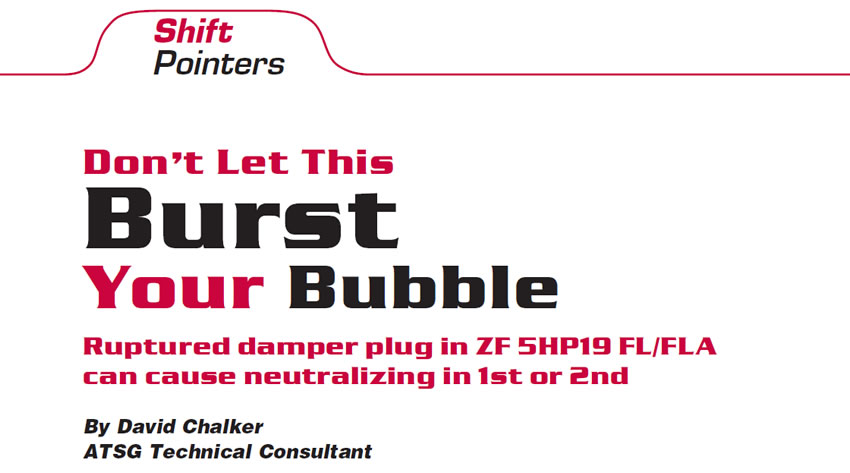
Stroke Choke
The forward-clutch control valve in the AX4N valve body (see Figure 1) plays a large role in the apply and release of the forward clutch (see Figure 2). The valve must be stroked or opened to allow pressure into the forward-clutch circuit to the shift valves and closed or unstroked to block pressure from the circuit.
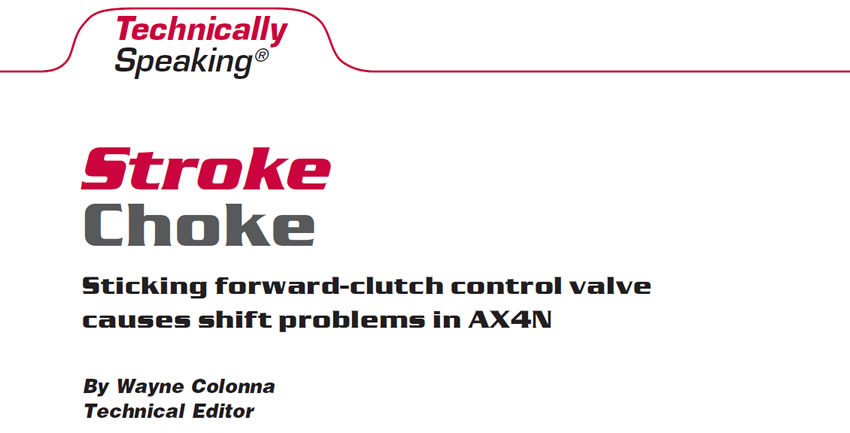
That’s Gross!
Pricing jobs in the transmission- and auto-repair business has always been a complex issue. Coming up with a labor rate and a parts markup that make sense and are applicable in all situations is almost impossible. There are too many variables to consider.

October 2005 Issue
Issue Summary:
Before or after overhaul, vehicles equipped with the Chrysler 46RE may exhibit a recurring diagnostic trouble code P1740 (torque-converter-clutch or over-drive-solenoid performance) or P0740 (torque-converter slip).
Vehicles equipped with the 4F27E may exhibit a neutral condition in 4th gear after the transaxle reaches normal operating temperature.
Changes to the final-drive gears in the Ford 4F27E transaxle, beginning with December 2000 production, resulted in different gear ratios.
After overhaul, a Ford CD4E transaxle may generate code P0741 after the engine reaches operating temperature.
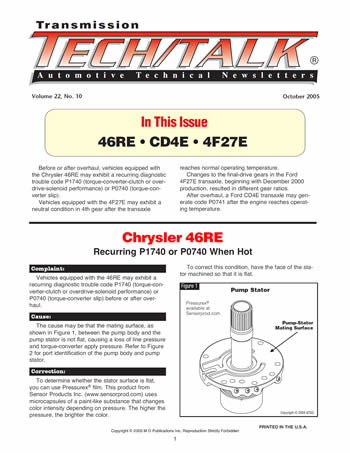
Reprogramming Our Procedures
We’ve heard many times how we can fix transmission problems by reprogramming the computer and how important it is to check for updates when dealing with a new problem or symptoms. Most of the technical-information sources have been preaching this for several years now, but it is important to note that you cannot rely on traditional service bulletins for complete information on vehicle-software updates.

Procrastination – Should We Talk About It Now or Wait Awhile?
When people attend seminars, listen to tapes or read informative books, they tend to get all jazzed up about fixing the problems with their businesses. Unfortunately, if they don’t take action to begin the change soon after the initial impact of recognizing the need and devising a plan to make it happen, the intensity can dwindle quickly or other factors can creep in and stop a good plan dead in its tracks.

Deceived
One step many technicians take in diagnosing transmissions that have electronically controlled line-rise problems is to unplug the pressure-control solenoid. If the solenoid, pressure-regulator valve and pump are in good working order, line pressure will rise to about 150 to 170 psi at 1,000 rpm in Park. If it rose to only 80-90 psi or didn’t rise at all, this would indicate that a problem existed inside the transmission.
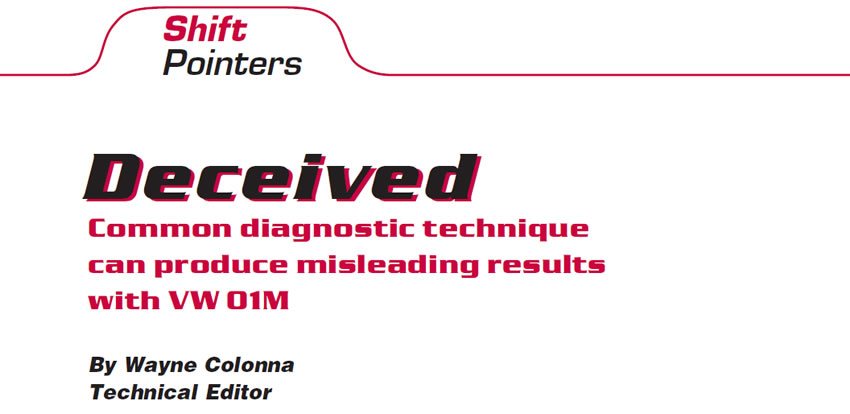
Out of Sight, Out of Mind
From time to time the ATSG tech line receives calls concerning 4L80-E transmissions with a reverse and/or third-gear problem. First thought may be compromised piston seals in the direct-clutch drum, or center-support rings. Perhaps even the center-support feed bolt is loose or cracked.
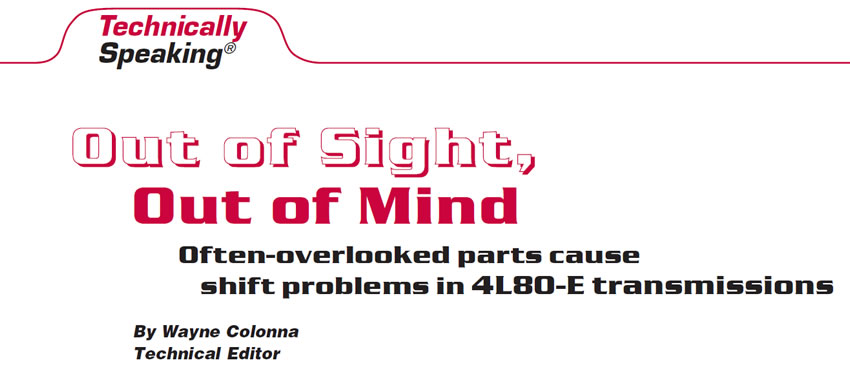
Look Before You Leap (into a CD4E)
How many times has your mother told you to look before you leap? It was good advice when you were a kid, and it’s even better advice if you’re about to tear apart a modern transmission – especially when the transmission in question is a CD4E.

